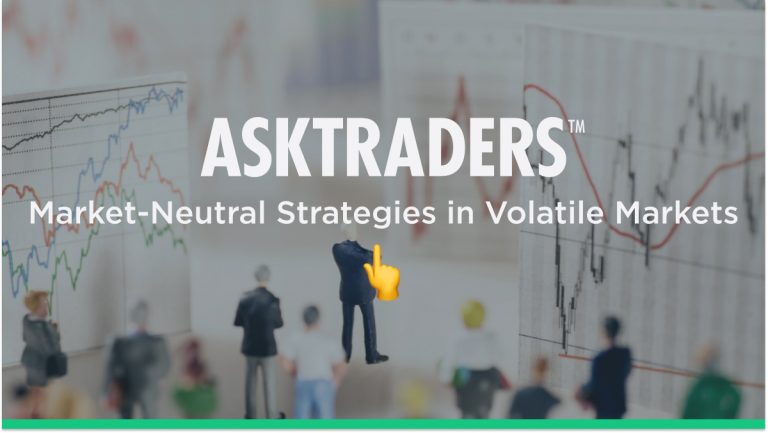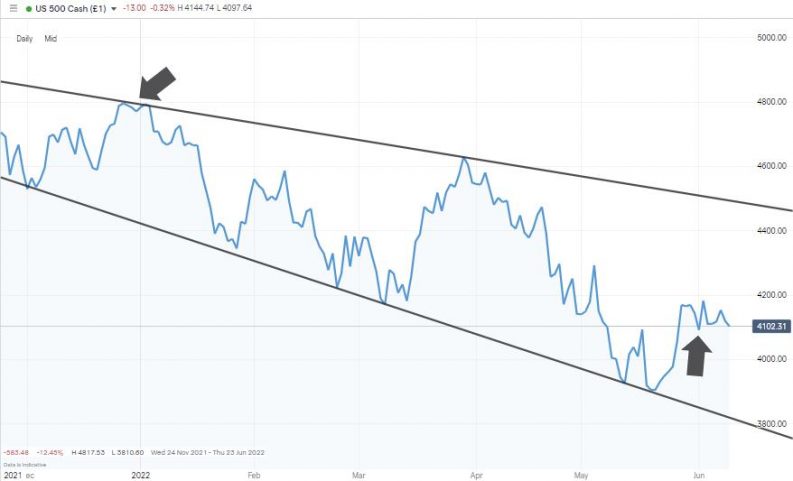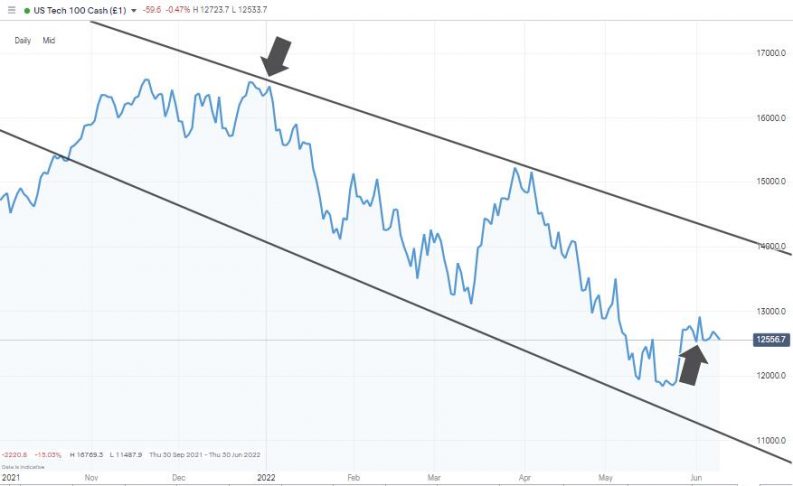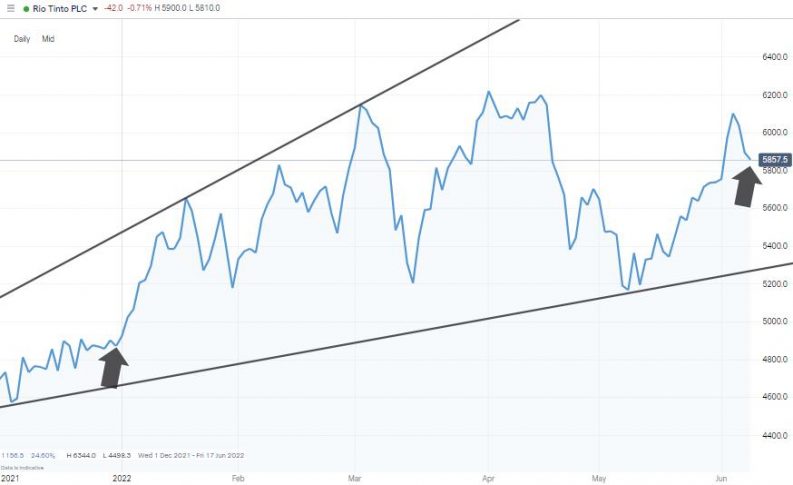
One approach to navigating through the uncertainty involves using market-neutral trading strategies – the kind made popular by hedge funds. These aim to generate returns regardless of whether the broader market goes up or down. The rewards can be smaller in size, but a smaller profit is always better than a loss of any size. A market-neutral approach can mean that you miss out on optimising returns during a bull run, but they are tried and tested and look like an ideal fit for current market conditions.
What Are Market-Neutral Strategies?
Market-neutral strategies aim to generate a net positive return to a portfolio by simultaneously going long and short different assets, particularly stocks. By taking long and short positions, the trader aims to minimise the impact of the wider market going up or down in value. A 10% price rise in an entire stock index would likely generate a profit on the long position and a loss on the short position, and vice versa if the wider market fell 10%.
The aim is for the leg of the strategy that makes a profit to be greater in size than the one that makes a loss. Using leverage can allow traders to scale up on position size so that a relatively small percentage point return is more substantial in real-cash terms.
Long-short strategies can operate over different asset groups but are most commonly associated with stocks. If analysis points to Microsoft having better long-term prospects than Apple, then long-short MSFT/AAPL would likely generate a profit as the wider market comes to the same realisation and rotates into Microsoft stock.
Market-neutral strategies can be in the same sector, as in the case of MSFT/AAPL or across sectors. A trader who went long the S&P 500 index and short the Nasdaq 100 index at the start of 2022 would by 9th June 2022 be sitting on a 9.36 percentage point return. The Nasdaq fell in value by 23.26%, while the S&P 500 lost 13.9% of value. Inflation is considered particularly bad news for growth stocks as the tech firms that make up the Nasdaq index fell in price to a greater extent than the more mainstream stocks found in the S&P 500.
S&P 500 Index – Daily Price Chart – 2021-2022 – Down 13.9% Ytd
Source: IG
Nasdaq 100 Index – Daily Price Chart – 2021-2022 – Down 23.6% Ytd
Source: IG
An almost double-digit percentage point return on a trade with a five-month holding period is a healthy return. The added kicker to the long-short S&P/NAS trade is that it’s market neutral.
Why Use Market-Neutral Strategies Now?
Market-neutral strategies offer protected returns and involve lower risk. During times of inflation, price volatility can pick up considerably due to inflation being a metric that is hard to predict. The inflationary bubble is certainly here, but opinion is split on where inflation rates might be in three, six, nine or 12 months. As a result, analysts are coming up with wildly different valuations of stocks and that makes markets riskier to trade.
Another positive feature of market-neutral strategies is that they can help traders develop a more disciplined approach to investing. It’s no coincidence that huge hedge funds favour long-short strategies as they can offer consistent long-term returns rather than spikes in P&L. This takes the emotion out of trading, which means that it can be easier to hold onto positions rather than bailing out of them during moments of market panic.
It's also worth remembering that it’s technically possible to win on both legs of the trade. If the price of the short position goes down while the long position rises in value, then you’ve booked the ultimate win-win. Both legs of the trade generate a profit, while at the same time offering the protection of being market neutral.
How to Set Up Market-Neutral Strategies
The secret to a successful strategy is good research. The use of fundamental and technical analysis can help you identify instruments that look well matched. It also helps if one of the firms has an upcoming news event in the pipeline, such as a performance update on a new project. This can then act as a catalyst for the share price to move and that relative gain between the paired stocks to materialise.
Trade entry and exit points also need to be considered, and it’s also worth noting that a pairs strategy might take a longer time to generate returns. It involves a different mindset from putting on a straightforward ‘naked’ long or short position, which can have a price that whipsaws.
Adjusting net exposure can help traders adjust the risk profile of a market-neutral strategy. The classic approach of splitting long and short positions 50:50 can be adjusted to align the strategy to underlying market activity. A move to a long bias of 60:40 or 70:30 would help capture some of the upside if markets are buoyant but still offer a hedge to downside risk.
What You Need to Know About Market-Neutral Strategies
Whether you’re an experienced trader looking to try something new, or a beginner attracted by the low-risk nature of market-neutral strategies, it’s worth taking some time to appreciate how they work. This is best done using Demo accounts or trading in small size as familiarising yourself with the nature of the strategy can help make it pay off when you start using larger amounts of funds.
These trusted brokers are known for offering a reliable service, but they also have a large number of stocks available to trade and that can help you find the ideal companies to pair up against each other.
It’s also important to keep an eye on trading costs. These reviews of different brokers include a breakdown of their T&Cs. Competition between brokers is intense, which is good news for the end-user. The stocks sector is known for offering super-low fees and commissions, making equity long-short strategies a low-risk but also cost-effective trading strategy.
Long-Short Strategies and the Risk of a Short Squeeze
One risk to be aware of is a short squeeze. Don’t forget that hedge funds apply billions of dollars into long-short trading and this means that short positions in some unpopular stocks can be sizeable. If a particular stock is targeted by a large group of investors, then a surprise announcement that results in it becoming a ‘buy’ rather than a ‘sell’ will be followed by a rush to close short positions. This generates more buying activity, which drives the price higher, and a vicious circle begins to build. The famous short squeeze in meme stocks during 2021 led to hedge fund Melvin Capital losing $7bn on its short positions.
One way to manage single-stock risk is to short an index rather than a particular stock. An example would be taking a long position in Johnson & Johnson (JNJ) or Rio Tinto (RIO) and shorting the Nasdaq 100 index. That way, if one particular stock in the Nasdaq does experience a short squeeze, then the impact on P&L will be muted.
This strategy would have come good if applied at the start of 2022 by a trader concerned that inflation could be building and about to impact the prospects of growth stocks. Both of the individual stocks mentioned offer protection against inflation, Johnson & Johnson due to its status as a defensive stock and Rio Tinto due to its mineral reserves.
Rio Tinto PLC – Daily Price Chart – 2021-June 2022 – Up 20.06% Ytd
Source: IG
Market-Neutral Trading Strategies and Opportunity Cost
Another factor to consider is opportunity cost. All strategies take up some of your capital and the reason why day traders target stocks with high price volatility is that they can get in and out of positions in a short space of time. Long-short strategies can take longer to come good.
Deciding how much capital to allocate to long-short positions will come down to risk appetite and market conditions, but the uncertainty running through the markets in 2022 offers an example of a time when using more cautious strategies could be prudent.
Market-neutral strategies can instead be thought of as a way of diversifying a portfolio. If you apply a percentage of your capital to lower-risk strategies, then it might even make it easier to hold onto a smaller number of higher-risk positions. Instead of 100% of your portfolio suffering extreme peaks and troughs in terms of performance, the overall returns will be smoothed out, making it easier to remain in high-beta trades.
Market-Neutral Strategies in Action
Equity long-short strategies can be traced back to the earliest days of hedge funds and continue to be one of the main building blocks of their market-neutral strategies. A recent study by research firm SigTech established that 26% of the world’s hedge funds are long-short funds. This number doesn’t include the number of funds that run a variety of strategies, with long-short very likely being applied to some degree.
Part of the popularity of the strategy is that it has a track record of consistently generating long-term returns to investors. The Eurekahedge Long Short Equities Hedge Fund Index (Bloomberg Ticker EHFI252) tracks the performance of long-short funds. It’s an equally weighted index of 1,325 constituent funds designed to provide a broad measure of the performance of long-short hedge fund managers.
As of May 2022, the annualised standard deviation is a relatively low 7.5%, pointing to the low-risk credentials of the approach, but the average annualised return is 8.56%. It also has a healthy win-loss ratio, with 66.91% of the months recording a profit.
Despite hedge funds applying trillions of dollars to market-neutral strategies, they are still to catch on with retail investors to the same extent. Part of this is down to the fact that in a bull market, the short leg of a trade will very likely be a drag on overall performance. That could be a risk worth taking when central banks are pumping the global economy full of cheap cash, but when inflation and interest rates are on the rise a different approach is needed.
Final Thoughts
Years of surging bull runs allowed investors to throw on long positions and make a healthy return. The situation has now changed, and market-neutral strategies are designed to allow you to trade the market as it is, rather than as you would like it to be. Used in conjunction with other strategies they can help smooth out returns and that actually helps investors to remain in the portion of a portfolio dedicated to higher-risk positions.
Broker selection is an important consideration. These brokers offer the range of instruments needed to help set up the right pairs trades. They’re also well-regulated and offer low-cost trading as well as research materials. They offer an ideal route into trading market-neutral strategies and once you’ve set up your account and put on your first trade, it’s a case of waiting to see how long-short trading can complement your trading and optimise returns.







